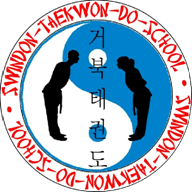



|
What I’ve discovered
Yi Hwang was born in Kyeongsang province on 25th November 1501, he was a child prodigy.
At the age of six a gentleman neighbour began to teach him from ‘The Book of One Thousand Letters’. His Uncle taught him from the ‘Analects of Confucius’ when he was twelve years old.
At nineteen he experienced a great awakening when he began to study the great Neo-Confucian volumes ‘Seongni Taejeon’.
A well-respected and intelligent man, Yi Hwang (1501-1570) passed the state exam for civil service at 34 a much earlier age than was usual. He acquired the pen name of Toi-Gye (Returning stream/creek) during his youth.
Yi Hwang worked relentlessly in government he was a man of great integrity; he was determined to eradicate all corruption from the government officials.
Yi Hwang’s philosophies and writings had a great influence on neo-Confucianism; he stressed the importance of I (Li), which he believed was the controlling agent in the universe, governing human nature and behaviour.
His ideas were in contrast to those of Yi I (Yul-Gok) with whom he met and debated Confucian philosophies. The two did not agree and it was a sad testimony to this fact that for many years the Korean government was split into two factions, each on opposing sides and each a follower of either Yi I or Yi Hwang.
(See also Yul-Gok)
In 1549 Yi Hwang retired from the government and returned home to build a school of Confucianism, unfortunately on his death in 1570, this academy was still not completed. However in 1574 the academy ‘Tosan Sowon’ opened and it is still in use today.
Toi-Gye wrote many influential works and his writings were especially popular even 200 years later in Japan. It is argued that his influence is still felt in China, Korea and Japan. |
|
In his encyclopaedia General Choi told us: Toi-Gye is the pen name of the noted scholar Yi Hwang (16th Century), an authority on neo-Confucianism. The 37 movements of this pattern refer to his birthplace on 37º latitude and the diagram represents the scholar. |